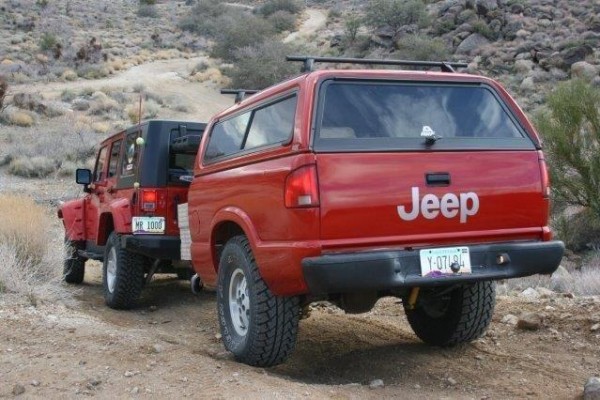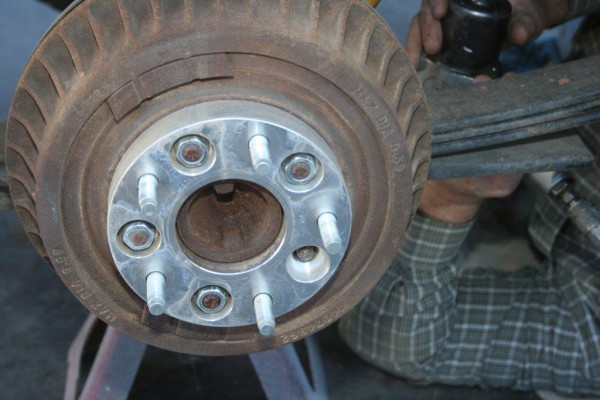An off-road New Mexico vacation in a camping trailer designed for Jeep and Chevrolet S10 pickups provided the evidence: the trailer desperately needed more stability on the rough terrain and truck’s rear bumper needed raised.
The trailer needed shocks and more height. The curved design of the original bumper would sometimes dig into the trail, kicking up dust and picking up water that would drown anything stored in the trailer near the tailgate.
Raising the Rear Bumper
The first order of business was raising the rear bumper. It was accomplished by adding 10-inch shackles with holes drilled at six and eight inches. Using the six-inch holes, the trailer was lifted four inches.
By using the eight-inch holes, you can achieve a six-inch lift, but might have created stability issues due to the length of the shackles.
With four matching pieces of steel and properly drilled holes in the ends of the shackles, welding a piece of square tubing for strengthening, and bolting them to the frame and leaf spring, raising the rear bumper proved to be a simple modification.
Installing New Air Shocks
The second job—new air shocks—was also an easy modification, but because of high-speed highway runs and sometimes-rough, off-camber trailers, the truck needed separate air lines for the new air shocks, which we located in the rear bumper.
The usual installation uses one Schrader valve with a Y in the air lines to supply both shocks. This allows air transfer between the two shocks, which means the low-side shock could lose air to the high-side shock. This usually doesn’t matter on the pavement because the trailer doesn’t stay low on one side but will swing back and forth quickly, depending on road conditions.
While negotiating the trail, the rig can encounter off-camber ground and be in that position for several minutes, which can result in some tense moments. Separate lines keep the air in the respective shocks, which means a more-stable trailer off the road, reducing the risk of a tip-over.
Installing New Electrical Components
In order to add a battery, camping lights, and backup lights to the trailer, new and additional cabling was needed.
Eventually, the larger, RV-style seven-prong electrical connector; however, the six-prong connector shown in the photos was used for this install.
The common flat four-prong connector is the basic trailer plug. It allows for a ground, taillights, a right turn signal, and a left turn signal. The turn signals also provide the brake lights. By upgrading to a six-prong connector, you can add electric brake lines and a charging line for an onboard battery. If the trailer has no electric brakes, the backup lights or third brake light can be activated. A seven-prong connector adds more options.
…
Sleeping Tip: A boat upholsterer can cut and customize bed mattresses to fit the shape of your truck bed! This simple upgrade turned a bowed, uncomfortable mattress into something pleasant to sleep on!























Comments